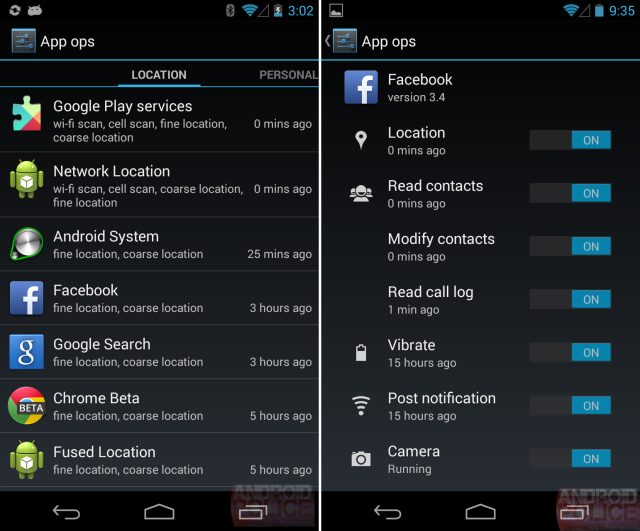
The benefit of a pre-I/O Tracker? A lot of these projects will probably launch! We at least have the Google I/O schedule to work from, and we try to tie what we're talking about into that as much as possible. While we're not guaranteeing everything on here will be released at the big show, this is a definite list of possibilities, and we'll mention what ranks high on the "plausibility" scale. So if you're not glued to Google news 24/7, this is a great way to catch up on everything you missed.
Table of Contents
- Android M
- Better privacy with selectable app permissions
- A Fingerprint API ecosystem
- Android Pay
- Google Hangouts gets smarter
- Google Calendar makes your agenda for you
- Android as a car infotainment OS
- Android as a virtual reality OS
- A theme engine?
- Multi-windows and split screen support
- More Voice commands
- Google Now API
- Try an app without the hassle of downloading and installing
- Better notification controls
- An Android for Work update
- Android gets kid friendly
- Chromecast 2
- The Google Play Store comes to China
- Google Glass reboot
- The $1,400 Google/Intel/Tag Heuer smartwatch
- Android Wear for iPhones?
- A replacement for passwords
- Polymer brings Material Design to the Web
- Google (not Google+) Photos
- YouTube's Twitch.tv killer
- Google's Smart Home Division is still kicking...
- "Brillo," an Android-based Internet of Things OS
- Project Ara and ATAP
- Google's SkyBox shows us a realtime view of earth
- Tune in for all the action on May 28
Android M

Full Android releases have alphabetical snack codenames, but this Android release is only named with a letter. Like Android L, which launched at I/O 2014, the single letter name indicates this is a developer preview. It will be an unfinished version of the next version of Android, and it will lack most of the Google apps you would normally get (though you can get current versions from the Play Store). The existence of a developer preview is also a signal that, like in Lollipop, there are significant under-the-hood changes that will affect app developers. It's also probably not going to get a wide release—Android L was only released for the Nexus 5 and Nexus 7.
So, we know Android M is coming at I/O, but what are we expecting in the release? We have a few educated guesses:
Better privacy with selectable app permissions

Android 4.3 shipped with a hidden feature called App Ops. The hidden UI allowed users to selectively turn off permissions for each app. So for instance, if you wanted to block Facebook from activating your GPS or microphone, you could do that. Currently, Android permissions are all-or-nothing. Once we discovered this functionality, Google quickly disabled the feature in the next update, saying it wasn't for users to play with and that it would be a nightmare for developer support. The feature existed so Google could test things like restricted user profiles, but the ability to selectively disable app permissions was built into the framework.
It sounds like Google will soon be ready to officially expose some of this functionality to users. A report from Bloomberg says that Android will soon "give users more detailed choices over what apps can access... That could include photos, contacts, or location." Functionally, that sounds an awful lot like App Ops—we're guessing the interface will be revamped, though.
A Fingerprint API ecosystem
Some Android phones, like the Samsung Galaxy S5 and 6 (and devices as old as 2011's Motorola Atrix), have had fingerprint readers, but those were OEM-created solutions. Google is working on a native solution for Android, and it almost made it into Lollipop and the Nexus 6. Late last year we found commits in AOSP for a Nexus 6 fingerprint sensor and an API for apps to plug into.
According to the commits, Google was working on the setup and enrollment process, a fingerprint lock screen, and a "service to manage multiple clients that want to access the fingerprint HAL API." Presumably, the last item is describing a system fingerprint API, which any app could plug into and use, so hypothetically you could authenticate Google Wallet or a Play Store purchase with a fingerprint.
While Samsung and Motorola can build functionally identical features into their devices, a Google-standardized API would encourage the entire Android ecosystem to finally jump onboard the fingerprint bandwagon. Widely used Google apps like the Play Store would support it, and it would even open up the possibility for Chrome to fingerprint website logins. A Google API would be stable enough and universally supported enough that third-party apps would begin to support it.
We have no guarantees the Fingerprint API will be in Android M, but this feature was so close to coming out that its inclusion in M seems very likely. Motorola's ex-CEO, Dennis Woodside, admitted that the dimple on the back of the Nexus 6 was meant for a fingerprint scanner, and the reason it was cancelled was that Apple bought the only company making a good fingerprint sensor. Other vendors have definitely caught up in the last year, as Samsung demonstrated with the excellent Galaxy S6 fingerprint scanner. The ecosystem really needs this API to come out so work can start, so we have every reason to expect a release in Android M.
Android Pay
Apple has Apple Pay, Samsung is developing Samsung Pay, and the oldest of the three, Google Wallet, is getting replaced by Android Pay. (What lovely brand uniformity.) Our own Megan Geuss reported that Android Pay will launch at I/O this year, and it would be an API that was “built from the ground up” for Android developers. The report said that Google Wallet would somehow be sticking around, so it's unclear if Android Pay is the new consumer-facing brand or just the name of an API. There is also the possibility that Google keeps both services around in a "two of everything" move.
Sundar Pichai, the SVP of products at Google, spoke about the service at Mobile World Congress, saying that Android Pay would start with NFC and eventually work with "biometrics," which almost always means a fingerprint scanner. Google just happens to be working on one.
Google also recently purchased SoftCard, the US wireless companies' failed shot at a mobile tap-and-pay solution, so it has a bunch of new patents for its mobile payment revamp. And speaking of the carriers, this new version of Google's mobile payments actually has a chance of getting traction. According to The Wall Street Journal, Google is going to give carriers a cut of the revenue. Carriers are much more likely to work with Google this time around, since 1) SoftCard is gone now, and 2) they get nothing from Apple Pay. The carriers spent years sabotaging Google Wallet only to have Apple Pay come along and completely cut them out.
Google Hangouts gets smarter
-
Left: Google Hangouts' new "Share Location" suggestion. Right: Emu offering a lot more suggestions.Google/Emu
-
The other person asks, "What are you doing Wed night," and Emu would automatically show users their schedule for that day.Emu
-
Discuss a movie and get show times, locations, and the review score.Emu
-
Mention a restaurant and get the Yelp review and shortcuts to OpenTable reservation times.Emu
-
If someone asks where you are, Emu would give you the option to show a map. So far this is the one feature that has been integrated into Hangouts.Emu
-
You could also snooze messages, just like Google Inbox.Emu
In 2014, Google bought an instant messaging app/company called "Emu," which would scan your incoming messages for actionable items and display controls below the message. Google Hangouts' first feature from this acquisition was easy location sending. When a contact asked "Where are you?" a button would pop up allowing you to easily send your location.
That's the simplest feature of Emu, though. It would also show your agenda when someone asked what you were doing on a given day, talking about a movie should display show times at the local theater and ratings, and a restaurant discussion would show the Yelp score and offer to make OpenTable reservations. We're expecting to see ideas like this integrated into Hangouts eventually.
reader comments
108